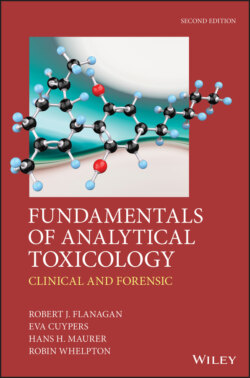Читать книгу Fundamentals of Analytical Toxicology - Robin Whelpton - Страница 43
Box 2.1 Calculating relative centrifugal force
ОглавлениеThe relative centrifugal force (RCF, g) depends upon of the speed of the centrifuge in revolutions per minute (RPM) and the effective radius of rotation, r
The radius of rotation varies along the length of the centrifuge tube
RCF may be quoted as maximum, minimum, or average
Conversion tables and nomograms for each rotor are normally supplied by the manufacturer of the centrifuge
Modern centrifuges have the facility to set the RCF directly
The RCF will be maximal at the bottom of the tube
RPM for a required RCF can be calculated from:where r is in mm
RCF from RPM is given by:
On centrifugation, anticoagulated whole blood (approximately 2000 g, 10 min; 2–8 °C if necessary) will separate into three layers: the bottom layer (normally 45 % or thereabouts by volume) consists of red cells. A thin intermediate layer of white cells and platelets called the ‘buffy coat’ is the next layer; and the upper, aqueous, straw-coloured layer is the plasma (about 50 % v/v). More plasma than serum can be separated from whole blood.
Some commercial tubes contain agents such as plastic beads or a gel that sits at the interface between the cells and the plasma to aid plasma collection. Gel separators have caused problems with some drug analyses (Berk et al., 2006), and although reformulated gels have been shown to have little effect on clozapine and norclozapine measurement (Handley et al., 2018), tubes containing gel separators are best avoided (Schrapp et al., 2019). Modern blood-collection tubes may contain a range of additives including surfactants, which may interfere in immunoassays, for example (Bowen & Remaley, 2014). The use of such tubes will also invalidate many trace elements analyses (Chapter 21) and may impair analyses for solvents and other volatiles.
